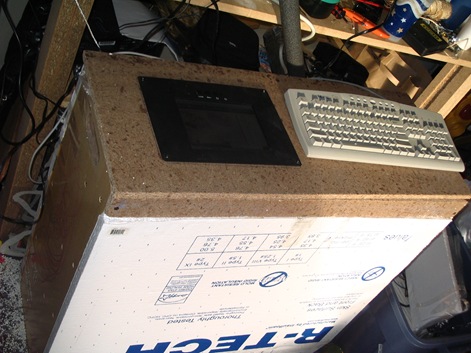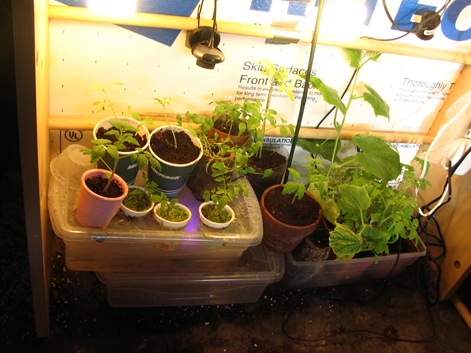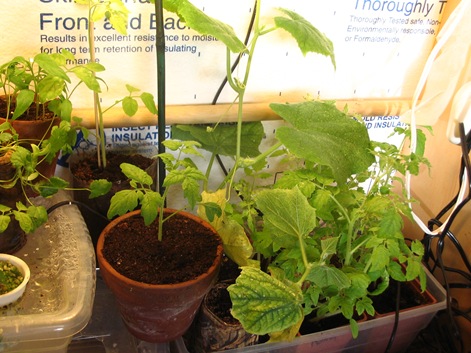Hardening off plants in the grow box
15.1 years ago computer, computer power control, cucumbers, electronics, indoor growbox, tomato
When you have seedlings growing indoors or a greenhouse during their life they have had the opportunity spending it in a near perfect environment with controlled temperatures, consistent lighting, no wind, etc. If you take this happy plant and move it directly into the wild (your garden) it can, and probably will, go into shock leading to its sudden death. The solution to this problem is to hardening off the plant. This is a process of slowly getting the plant accustomed to the real world environment a couple hours at a time.
You start by bringing the plant outside for two hours in the late evening or early morning hours. If the plant begins to wilt let it recover indoors until it appears healthy again. Each day increasing the amount of time it is exposed to the outdoors over 1-2 weeks period, or until the plant can survive a full day/night outside. At this time it is ready to get its permanent home in your garden.
This process takes a lot of patience, which as they say is a virtue. Unfortunately I believe I am missing this virtue. My history of hardening off plants follows a similar pattern; bring out a plant in the evening with the full intentions of bringing it back in after a few hours, unfortunately I forget and it spends its first day out in the cold all night which normally the demise of my summer plants.
This year I am using my grow box to harden off my plants. Normally the grow box runs at about 68-72 degrees which is a great environment for my seedlings. By allowing some hot air to vent and lowering the maximum temperature setting in the software I am able to bump the temperature down to a range of 57-65 degrees. After a few days I will drop the temperature a few degrees until it has similar low temperature to the outdoors, while still staying at a safe temperature for the plants.
Given today using an unknown neighbor’s weather station we had a high of 48.2F and low of 35.1F I still have some time before I can safely bring my tomatoes/cucumbers outside but they should be toughened (hardening) up and ready to go when it is.
Tags: cheap, garden seeds, growbox, led, outdoor plants, tomato plants, vegetables
Computerized grow box update
15.2 years ago cilantro, computer, computer power control, cucumbers, electronics, indoor growbox, tomato
Haven’t mentioned the computerized grow box for a while, so think it is a good time for an update. The moisture sensor corroded away, but have plans to make a much more beefier one. With the exception of the hard drive failure, the basic functionality of the computerized grow box has been excellent and the plants have been thriving. The only physical improvement I have made is adding some particle board to the top and side (salvaged from packaging material from some furniture we ordered) of the grow box. This helps retain heat and allows the access panel to stay put without requiring tape and/or bags of coffee grounds propped against it. I also mounted the LCD panel securely to the top of the box.
They say as your paycheck increases, somehow your expenses follow suit. I have a feeling same concept applies for grow boxes. As the computerized grow box is about four times bigger than my PC grow box it has quickly getting pretty crowded waiting for the time I can move my summer vegetables outside. I am planning on doing some reorganization this weekend to clean things up a little bit but still going to be pretty tight quarters.
The current inventory in the grow box are 12 tomato plants (was 18 but gave six away at a recent gardening talk), 2 cucumber plants (had one fatality from Peat/WonderSoil experiment, looks like Peat lost), 6 pepper plants (need transplanting), and a cilantro plant which was the source of my first harvest of the year.
Now just hoping Punxsutawney Phil is wrong and we really don’t have six more weeks of winter, though with the snow we got two days ago and the current temperature outside, I think he might be right.
Tags: cheap, cilantro, coffee grounds, garden seeds, growbox, outdoor plants, pepper plants, tomato plants, vegetables
Control two 120v electrical outlets with your computer
15.4 years ago computer power control, electronics, solid state relay
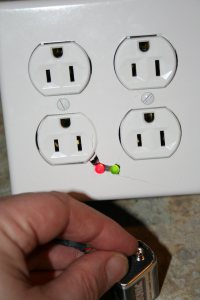
Here is one more component for "Project Everbearing" which requires the ability to toggle a 120V power source using my PC. Now there are a few interesting applications for this, home automation, music synced Christmas display, or just the nerd factor of being able to say I can turn on my coffee maker from your web enabled phone. Whatever your need, hopefully with these instructions you can do this yourself.
If we had lawyers, they probably would want us to say this:
WARNING: I am not an electrician and do not pretend to be one. I do not know the specific building electrical codes of your area, so please be sure your wiring is completed under the proper safety code for your area. As always, using high voltage electricity can result in self-electrocution or burn down your house if not done safely so if you are not comfortable doing this wiring please contact a qualified professional.
Materials:
- 2 – 20 amp solid state relays (got off eBay for $4.00 each)
- 1 – Outlet box (Home Depot for $2.00)
- 2 – 20 amp outlets (Home Depot for $1.25 each)
- 1 – 2 outlet switch plate (Home Depot for $0.50 each)
- 1 – PC power cable
- 2 – LEDs (optional)
The outlet I am plugging this into is 15 amps, though my use for this project will be considerable under this but best to place for worst case scenario and I would rather trip a circuit breaker than who knows what happens when solid state relays or outlet exceeds their limits. I could have saved a couple dollars and gone with cheaper mechanical relays but solid state will last much longer even with frequent toggling on/off.
Now for the build, this was actually surprisingly easy and took less than an hour from start to finish. I first fed the power cable through and three stands of low voltage wire through access in back. I cut about 6 inches of wire off the end of the power cable. Using the continuity feature of my voltmeter I verified the hot, neutral, and ground, then checked one more time. I attached the neutral and ground in parallel to both outlets. I then connected the hot from the power cord to left side of both SSRs. I then used the 6 inches of wire I cut off to connect from left side of SSR on both and connected a wire from the left side to the corresponding outlet.
Now to add the ability to turn the things off/on using low voltage. I hooked up the wires fed through the back (which will later be hooked up to computer’s parallel port) green to positive SSR #1, red to SSR #2, and black to both grounds. Now with 3-12 volts of power to these connections will activate the SSR and provide power to the outlet. For a little added effect and easy confirmation everything is working (even with the unit unplugged) I also attached corresponding red/green LEDs that match the wires (I am getting old color coding helps) I was doing this hack indoors though first thought was to use my soldering iron to burn a nice little hole into the outlet plate but didn’t want to stink up the house, so risked using a drill instead. As you can see from the pictures I should have gone outside. With a little solder and hot glue everything seemed to be staying together. 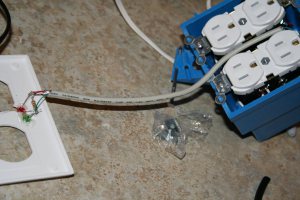
With all the wiring completed, I carefully packed everything into the outlet box. The SSR were already pretty snug but I added little but of hot glue in case they feel like shifting around after everything was put back together. Being careful that wires are staying secure and no shorts are being created carefully screw the outlets to the outlet box. Finish it up with a (cracked) outlet plate and the assembly is complete.
Now the scariest part still remains, which is testing, first part is plugging this monster in. If you plug it into the wall and no sparks occur you are in pretty good shape but not in the clear yet. Plug something like a nightlight into your switchable outlet box, should be off now. Using a 9-volt battery connect black to (-) and red to (+) if you didn’t cross your wires anywhere the red LED should come on and appliance plugged in should get power. Now switching to the other side do the same with the green wire and appliance comes on with sparks or fires looks like a successful build. 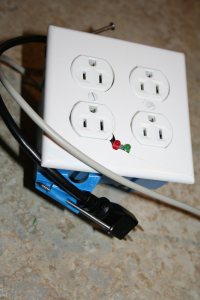
Tags: cheap, coffee grounds, led, vegetables
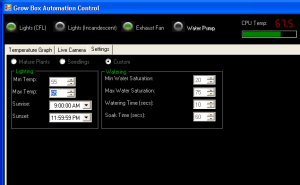
![image[18]](http://www.cheapvegetablegardener.com/wp-content/uploads/2009/03/image18-300x183.png)
